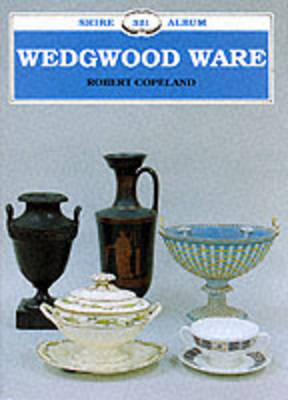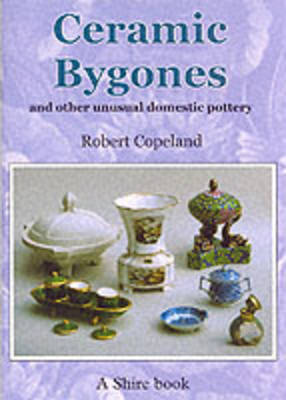Shire Album S.
4 primary works
Book 97
Blues made from cobalt were first used widely for painted decoration in China during the fifteenth century. Much of the porcelain imported into Europe was decorated with blue designs, and after about 1650, when tea was introduced, the volume of blue and white 'chinaware' brought back from Canton was enormous. European potters tried to emulate this fine tableware, most successfully on artificial portcelain and tin-glazed earthenwares. The imports from China decline in the 1780s, and owners of Chinese services found it difficult to obtain replacements or additions. To meet this need, British potters copied the hand-painted patterns using the technique of transfer-printing from engraved copper plates. Spode perfected this process, and his wares have never been surpassed.
Book 309
The two Josiah Spodes, father and son, may be justly regarded as the second most important names in the development of English ceramics. Under their direction, two of the most important products in the English ceramic repertoire were perfected: underglaze transfer printing on earthenware; and fine bone china, a very practical porcelain. The first set the stage for the enormous burgeoning of the transfer-printed trade which became known as 'Staffordshire Blue', including the Willow Patter and Blue Italian. The second, the bone china formula, proved to be so successful that it superseded earlier artificial porcelains and became one of the most sought-after 'traditional' English productions.
Book 321
Josiah Wedgwood I was born into a family of potters and became the finest marketing man of his era. His pioneering spirit built up the most important English pottery business of the eighteenth century so that the name Wedgwood became a generic word for fine earthenware. He is justly famous for perfecting the Black Basalt and Jasper stoneware bodies and for producing many designs based on the antique artefacts excavated at Pompeii and Herculaneum. This book also reviews and illustrates the firm's products through the nineteenth century, the designs of Lessore, Dresser, Crane and Barnard, the resurgence after 1904 when John Goodwin became art director, and the subsequent restablishment of the firm's essential greatness.
Book 383
Metal is expensive to shape: copper needs polishing and may be injurious to health; iron and steel rust. Ceramic products, made from clay, fired and glazed, can be cleaned easily and are the most hygienic wares available. Although breakable, they can be very decorative and colour. Indeed, a certamic is a thermo-setting plastic and may be formed into many thousands of different articles.


